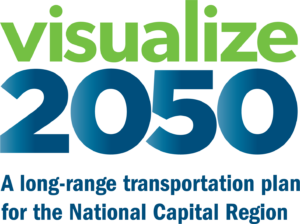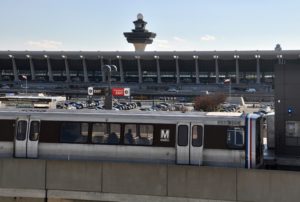


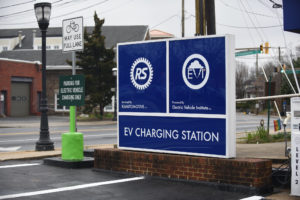
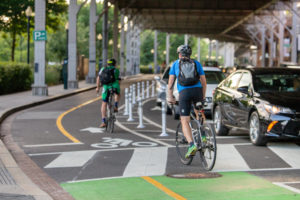
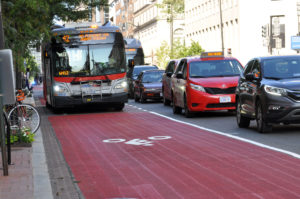
Thank you for your comments and feedback thus far on the Visualize 2050 National Capital Region Transportation Plan initial project list! The first comment period, which opened on February 15, closed on November 30, 2023. Almost 1,000 comments were submitted and shared with the Transportation Planning Board (TPB) and the TPB Technical Committee at their monthly meetings throughout the comment period.
The TPB will review a summary of all comments received in December 2023. In early 2024, TPB staff will review the District, Maryland, Virginia, and WMATA proposed regionally significant for air quality projects in preparation for their release for public comment and presentation to the board for approval. These projects will inform the plan’s air quality conformity analysis.
From March 1 – 30, 2024, the public will have the opportunity to comment on a portion of the projects in the Visualize 2050 plan. Which projects? A regionally significant subset of transportation projects that may impact the attainment of air quality standards. Examples include projects that affect roadway or transit capacity such as roadway widenings, extensions, or lane reductions, new high-occupancy vehicle (HOV) or express toll lanes, and transit capacity expansion.
Minor road, bicycle and pedestrian, or transit improvements are important to the region’s network, and they make a difference when it comes to day-to-day connections. However, while considered in the overall Visualize 2050 plan, minor projects are not included in the air quality analysis and are not part of the March 2024 comment period.
Details about the March comment period will be shared on this website and through TPB News. Subscribe to our monthly e-newsletter to receive announcements.
The TPB approved its current long-range transportation plan, known as Visualize 2045, and the Transportation Improvement Program (TIP), on June 15, 2022. The U.S. Department of Transportation (DOT) and Environmental Protection Agency (EPA) approved the Air Quality Conformity determination for the plan and TIP on August 25, 2022. As the TPB is required to produce a plan every four years, the next plan would typically be due in August 2026. However, through Resolution R19-2021, the TPB directed its staff to initiate an update to the plan with a target completion date of 2024.
In April 2023, the TPB approved an update to the Visualize 2050 planning process schedule to allow member jurisdictions an additional six months to reexamine and resubmit projects for inclusion in the plan. This reexamination and resubmission is called the Technical Inputs Solicitation (described in more detail below). Eligible agencies will submit project inputs that are regionally significant for air quality by the end of 2023, and a 30-day public comment to weigh in on these recommended plan projects will take place in March 2024. The new target completion date is June 2025.
At its core, the NCRTP describes how the TPB, its member jurisdictions, and transit agencies work together to tackle challenges facing the region, gather public opinion, and through policies and investments in projects and programs, advance the most effective strategies to make progress on the region’s goals today and in the future. Developing a metropolitan transportation plan is a federal requirement for the TPB, and the plan describes why a federal requirement exists and how the TPB meets those requirements.
The plan includes many activities and components. There are two main parts of the plan. The project investments within the financial plan are analyzed to ensure the emissions from the future transportation system meet air quality goals. The second main part of the plan provides a comprehensive description of the regional policy priorities and general strategies to achieve desired future system goals.
While Visualize 2050 is focused on a transportation future 25 years from now, the TIP is the four-year federal obligation document which describes the TPB board-approved transportation projects scheduled to receive the federal transportation funding and all regionally significant for air quality projects. The TIP includes highway projects, rail, bus, and streetcar projects and bicycle and pedestrian improvements, as well as roadway and transit maintenance projects, operational programs, and many other transportation-related activities. Projects must reflect the NCRTP’s investment priorities. They are developed by transit agencies, localities, and states and are prioritized through the selection processes of the many funding programs available to the region, approved for funding by these agencies before ultimately going to the TPB for approval.
Regionally significant projects are:
Any project on a facility that is included in the coded regional network that adds or removes at least one continuous vehicular lane from one major road to the next or adds a new access/egress location or capacity; or
Any transit project that adds or modifies fixed-guideway transit facilities (heavy rail, light rail, bus rapid transit).
Source: Visualize 2045 Technical Inputs Solicitation
Photo: Potomac Yard Metroway, Virginia (Beyond DC/Flickr)
The Technical Inputs Solicitation is the process by which localities, transportation agencies, and states submit projects and programs for board consideration and inclusion in the National Capital Region Transportation Plan and TIP.
Click here or on the image to the right to download the solicitation document (Updated April 2023).
See below for additional resources.
The following resources are provided to inform regional transportation planning, including the inputs to the National Capital Region Transportation Plan.
Inputs to the next plan should:
Technical staff should use the TIS Instruction Guide to input their project submissions.
Air Quality Conformity refers to whether the National Capital Region Transportation Plan projects collectively contribute to the air quality improvement goals embodied in the Clean Air Act Amendments of 1990. If the NCRTP is found by the TPB to meet regional air quality goals, federal agencies certify that the plan is “in conformity.”
Financially constrained means that each project included in the plan must be capable of being completed using revenue sources that are already committed or reasonably expected to be available in the future.
For answers to any of the following questions, please refer to the FAQs document by clicking here.
